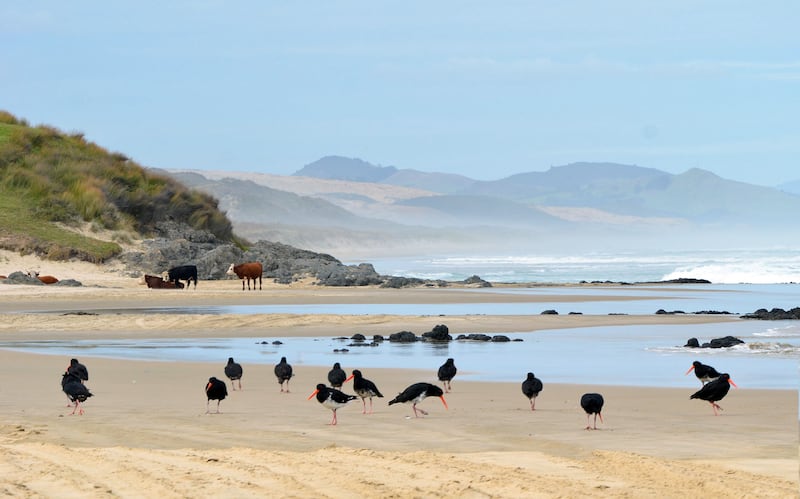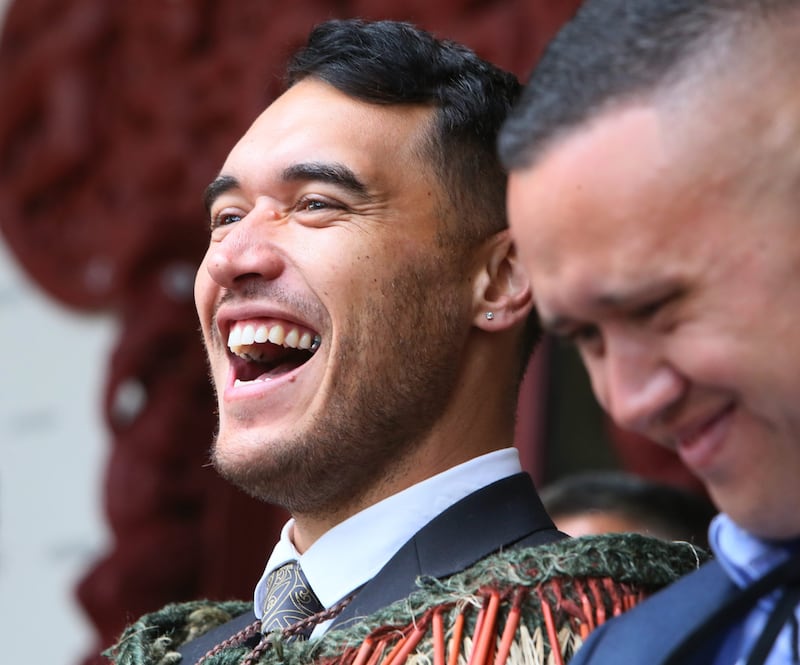Summer for the country’s northernmost mayor means the haven of whanau at the end of the road in one of New Zealand’s most remote communities.
Far North Mayor Moko Tepania (Te Rarawa, Ngāti Kahu ki Whaingaroa) returns to his family whenua in the North Hokianga coastal community of Mitimiti.
The tiny settlement clings to the narrow strip of low hills sandwiched between beach and mountains, at the end of a single narrow dusty road that winds west towards the sunset over the folds of Papatuanuku towards the crashing Tasman Sea.
There, it is time to fill his cup, reconnect with whānau and recharge from the year that’s been.
“I always go home to Mitimiti, it’s paradise,” Tepania said.
“It’s time to reconnect, take in the beautiful sea air, and finally have a breather.”
About 50 of Tepania’s whānau from around New Zealand and overseas are returning to the Mitimiti family land where his grandparents live, camping there in quintessential Kiwi style.
They’ll be part of the Far North’s 75,000 population doubling over summer as New Zealanders flock north.
In Mitimiti, over summer, life shifts gear for Tepania.

“No shops, no cellphone coverage. It’s time to reconnect with the things that really matter in life.
Mitimiti settlement sits on the very edge of miles of empty Tasman Sea west coast surf beach and sand dunes on one side, and the steep mountains of the Warawara Forest on the other.
The typically low-key predominantly Māori settlement has only about 50 homes, a marae and a school – and horses and cattle that roam through it, out onto the beach and along the road. The sounds of crashing surf are a constant backdrop, with sea haze filling the air.
On the beach’s jagged black rocky outcrops, with perhaps Northland’s best rock pools, the tides are forever changing, kelp constantly swirling and kutai (mussels) the settlement is famous for proliferate, as the smell of iodine hangs in the air.
These are the things of Tepania’s Mitimiti joy.
Summers in the uniquely Northland community are like New Zealand used to be.

“There are no fences, cattle and horses are everywhere. And there are the most beautiful sunsets you’ve ever seen,” Tepania said.
Mitimiti’s way of life is close to the land.
It’s life from the land and sea with pig hunting and fishing for kai.
Iconic local kutai feature large. There’s even a special easily-accessed spot called pensioner rock on the beach, which is only for older community members to gather their kutai from.
“Everyone looks after each other.
“There’ll be bartering on the beach, trading. Those who have been netting and caught mullet might swap their fish for something else,” Tepania says of summer.
His Mitimiti summer will include management involvement in North Hokianga’s iconic annual inter-marae touch tournament.
Far North District Council (FNDC)’s wooden Waihou River long bridge down the road and between Panguru and Mitimiti serves as a dividing landmark between seven participating marae. Midgets, open A’s, Open B’s and golden oldies teams will be furnished by each.
From the north side of the bridge Waihou, Rangi Point and Mātihetihe marae will compete against the south side’s Panguru, Ngāti Manawa, Waipuna and Motutī marae in a round robin event. This culminates with north or south crowned ultimate winners and bragging rights for the coming year.
The tournament will journey through games, playoffs, semi-finals and finals. Several of the best players from the two marae groupings on each side of the bridge will then be put together into representative north and south teams, competing to become victors.
Mitimiti’s Mātihetihi marae fishing competition is also on the summer calendar.
Just before New Year’s Eve, participants will spread out along 15 km of beach north and south of Mitimiti, in the surfcasting event.
About lunchtime, hangi cooked at the marae is delivered to competitors by four-wheel-drive motorbikes, which then return to base camp with the fish that have already been caught.
There will also be hōiho (horses) to ride over summer too. They’re a constant feature of Mitimiti life. Clusters of horses freely roam embayments along the beach’s back dunes, some broken in, many perhaps not often ridden.
Mitimiti’s Dunn family are the local horse whisperers.
“It’s always the Dunns we get to choose a horse for us to ride,” Tepania said.
The Dunns contributed horsemen services for the Lord of the Rings and Last Samurai movies filmed in New Zealand.

Tepania said going home for family time out would help get through the impacts of some of the huge things that have happened in 2024, locally and nationally.
“It’s a time for people to re-energise, ready to go back out there and fight for what’s right for them.”
Tepania was among 42,000 New Zealanders in Wellington in the hikoi against the Treaty Settlement Bill.
“The sense of unity, kotahitanga at that event was palpable. It was such a beautiful positive thing to be part of,” he said.
Tepania said standing for the Far North mayoralty for a second time in 2025 was “definitely something I am considering.”
But that decision would not be made without talking to his wider whānau.
Tepania said he would probably make this decision at about the time of Matakiri, – the same time of year as he had made the decision in 2022.
Before then, there’s summer to kick back into.
Tepania said in the Far North - which was a home for all New Zealanders given the role Waitangi has in the country’s story and important founding documents signed in the district – locals' manaakitanga for thousands of visitors would be in full force.
“This is the birthplace of New Zealand. Welcome home.
“Enjoy time in the Far North with whānau and friends and those you love. Respect and enjoy our place and its environment just as you would at home.”




